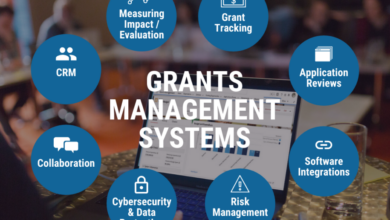Top 6 Emerging Logistics Industry Trends & Innovations in 2023

This post will explain trends in logistics industry. The year 2021 has generally been an extension of 2020, with COVID-19 continuing to impact the airfreight market and Logistics Industry. While unpredictability still hangs over lots of businesses, others are adopting brand-new practices to shore up their shipping strategies in a post-COVID marketplace.
In the last several of years, technological developments influenced numerous markets, & the logistics industry is no exclusion. In fact, this division has probably served the most by executing new logistics trends. As COVID-19 continues to improve the supply chain, it is important to expect the emerging trends and developments in the Logistics industry. Be aware of the leading 6 Logistics Industry Trends and innovations to prepare an effective logistics and supply chain market strategy for 2022.
Top 6 Emerging Logistics Industry Trends & Innovations in 2023
In this article, you can know about trends in logistics industry here are the details below;
And did you understand? According to the current logistics statistics, the logistics market is foreseen to grow at a CAGR of 4.6% during 2021-2026. As a consequence, the logistics corporations need to move on with ingenious methods to respond to these quickly changing logistics trends in 2022.
So, this article will talk about some of the leading emerging trends and shifts in the logistics industry that need to be dressed in 2022. Let’s dig in. Also check bitcoin ira
What are the Best Logistics Industry Trends For 2023?
As the logistics industry keeps improving with time & trend, here are a few of the top trends and developments in the logistics industry that may affect in 2022 and beyond. Spend some time to go by these trends & draw insight from them:
Trend # 1: Cloud Computing
Adoption of Cloud based systems and Cloud Computing is one of the greatest trends in the logistics industry. As the cloud platforms require a software-as-a-service (SaaS) model, it opens up unlimited opportunities for logistics companies. It permits reaching greater profitability and going beyond the typical returns of on-premise systems’ capabilities.
In spite of the issues about security and personal privacy, the supply chain management business adopt cloud based supply chain management options in the middle of the existing COVID-19 pandemic, which has actually led to a great deal of supply chains being disrupted or broken for an uncertain time. The main factor is the transparency and traceability of cloud based logistics. The cloud will be a standard requirement for providing customer-centric logistics services in years to come. It will help suffice expenses for preserving infrastructure and setting up solutions and permit service providers to target small businesses who prefer to spend for innovation on a membership basis.
With the versatility of pay-per-use software preserved and deployed within a reputable cloud infrastructure, logistics and supply chain company can stay in front of the quick modifications the industry is undergoing.
The logistics and supply chain business are on track to adopt cloud computing in supply chain management, with 50% of logistics provider already tapping into cloud based logistics and 20% all set to move their on-premises services to the cloud.
Trend # 2: Blockchain Technology Integration
Blockchain applications use high potential for fulfilling logistics functions. Blockchain innovation forms the circulation and transport movement in 2022 and beyond. It can resolve key challenges by producing an encrypted digital record that tracks products at every phase in the self-driving supply chain.
It makes any irregularities that could interfere with a shipment, clearly noticeable and allow companies to solve problems shooting. Blockchain can automate logistics means while also making it much easier to verify goods-reducing documents and supporting end-to-end traceability. The Blockchain technology also allows organisations to share data safely and accomplish typical goals more efficiently.
Trend # 3: Internet Of Things (IOT).
The logistics industry has combined AI solutions into its progress, including smart transportation and path preparation– however this is yet to advance.
According to a global AI Survey, choice of AI shows its worth. Using Artificial Intelligence in logistics can increase business’ profits by over 40% yearly. A few of the big companies increase financial investment in AI technologies in order to save money and time in the future.
AI has actually currently affected the logistics quarter in the last decade. Using AI helps develop the functionality of the operation, identifies potential problems, and proposes decisions.
AI algorithms with ML assistance organizations to become proactive in dealing with need variations. For instance, AI-based forecasting services let managers plan supply chain processes and decrease running costs.
Trend # 4: Self-Driving Trucks.
The self-driving innovation is still under improvement. It needs to get rid of specific challenges, such as enhancing driverless software application to make it able to effectively operate on metropolitan roads with rush hour. However, it’s one of the future transport trends. From a long-lasting point of view, transportation services ought to get ready for upcoming innovation changes within the industry and begin equipping their trucks with self-navigating management systems that can gain from correct motorists.
Because of expert system (AI), an AI-enabled automobile can properly examine road conditions and gain from how truck drivers act under unusual conditions on the road. Additionally, the 5G technology will catalyze the adoption of self-driving fleets. In the long-term, these cars may become better chauffeurs than human operators.
Tesla’s electrical semi trucks have auto-pilot features which can help with the driving process.In fact, many groups like Walmart, Pepsi, Asko, and Loblaw are arranging for their order of Tesla Semi trucks for their business requirements.
Trend # 5: Anti-Theft GPS.
The anti-theft GPS innovation in the transportation and logistics business today extends further than just a tool to assist drivers to navigate from locations. With the development in mobile innovation and mobile apps for logistics movement options, logistic business are getting concentrated on the increased visibility.
Hence, tracking innovations adoption and change for increased traceability are amongst the major driving trends in the amount chain and logistics industry in 2021 and 2021. Anti-Theft GPS, for example, is a method to get near real-time areas for entire fleets and different items in transit. The additional security procedures will likewise assist prevent losses across the board. GPS tracking technology with anti-theft functions can work marvels for your service, and the advantages are countless.
Trend 6 # Last-Mile Delivery.
Companies continuously go above and beyond in order to offer users with a smooth shipping experience. In 2022, increasingly more organisations will leverage advanced innovation tools to offer customers with real-time updates & even non delivery reasons for their orders.
According to a statement from The World Economic Forum, by 2030, 60% of the Earth’s inhabitants will reside in cities. And this number will grow to 70% by 2050. This growth of urbanization implies that a considerable logistics industry trend will be the last mile shipment effort. With last-mile shipment, the companies go above and beyond in order to provide users with a smooth shipping experience. Also check Leadership and management skills
Last-mile delivery is the most vital part of logistics, as it is directly related to consumer complete satisfaction. However, last-mile delivery deals with different issues, consisting of delays due to traffic jam, client subtleties, government regulation, and shipment density. As it consists of a significant portion of the total cost to move goods, it is thought about as the last action of the supply chain to be considered.
Summing Up.
Today, the logistics industry looks entirely various from it did numerous years ago. The logistics trends stated above will continue to impact the logistics sector in 2022 & well into the future.
However, new trends & innovations developing the logistics industry require to be integrated with existing options. Services can now create a next-generation stack that leverages these innovation financial investments.
So, if you wish to integrate these trends into your logistics organization, you should be an educated person. Supply chain management courses can help in advancing your profession to the next level. And this will lead you to acquire a competitive advantage in the market.




